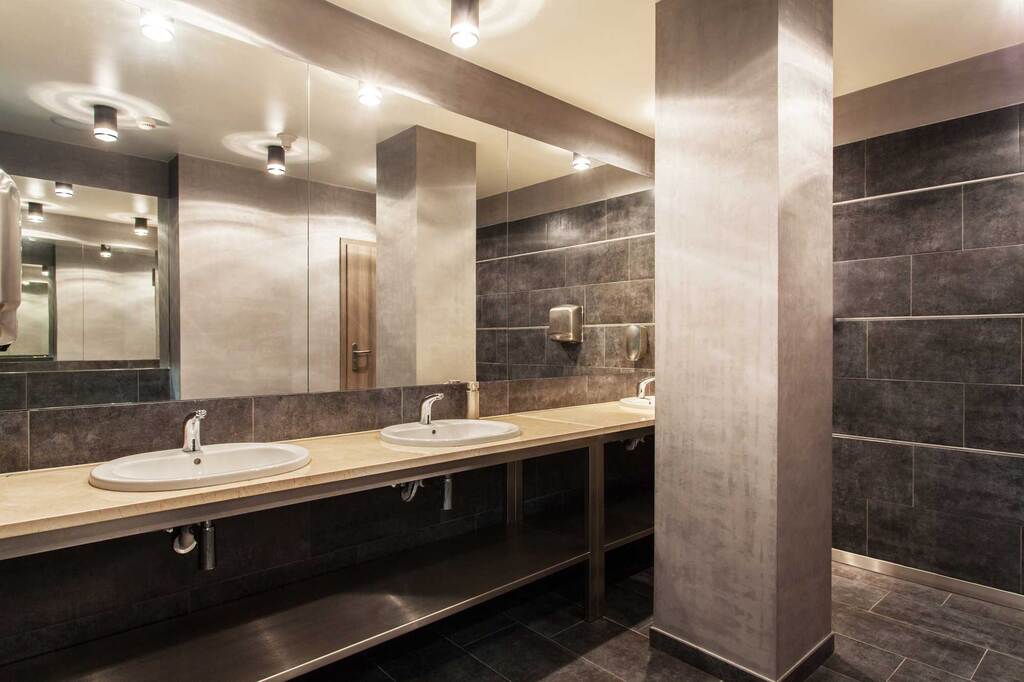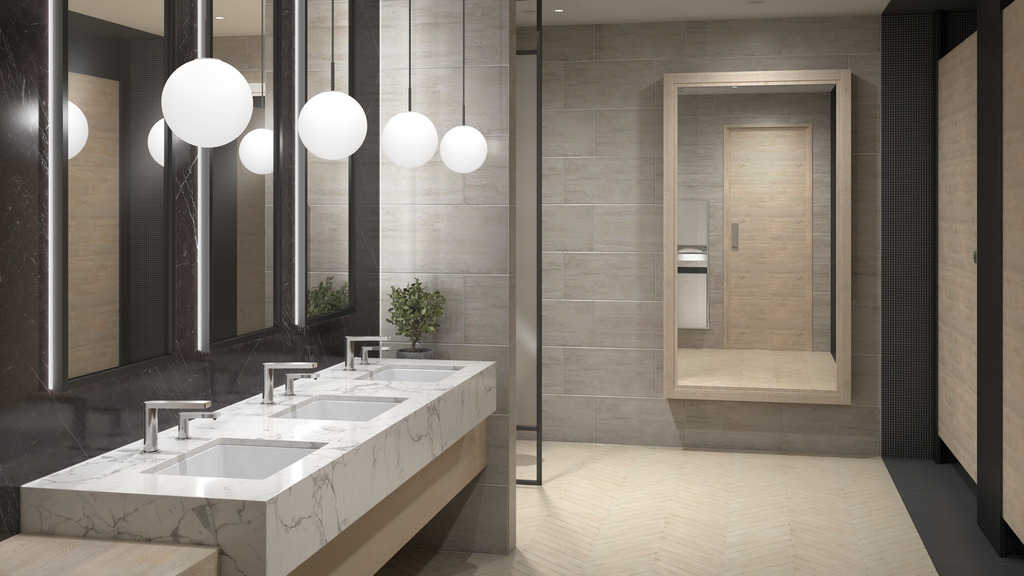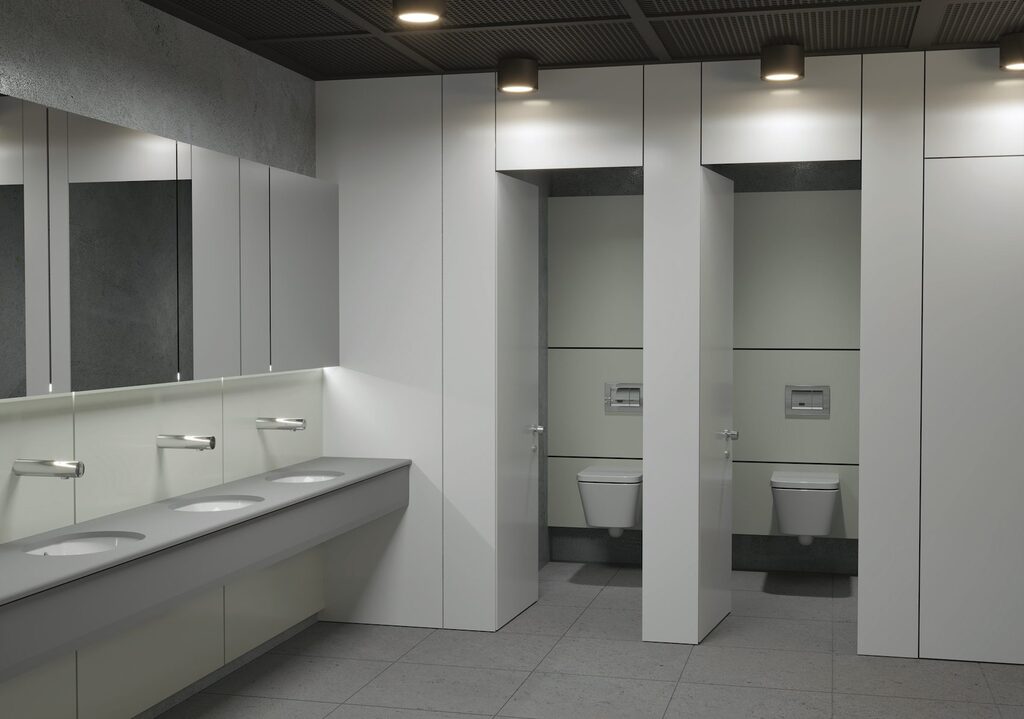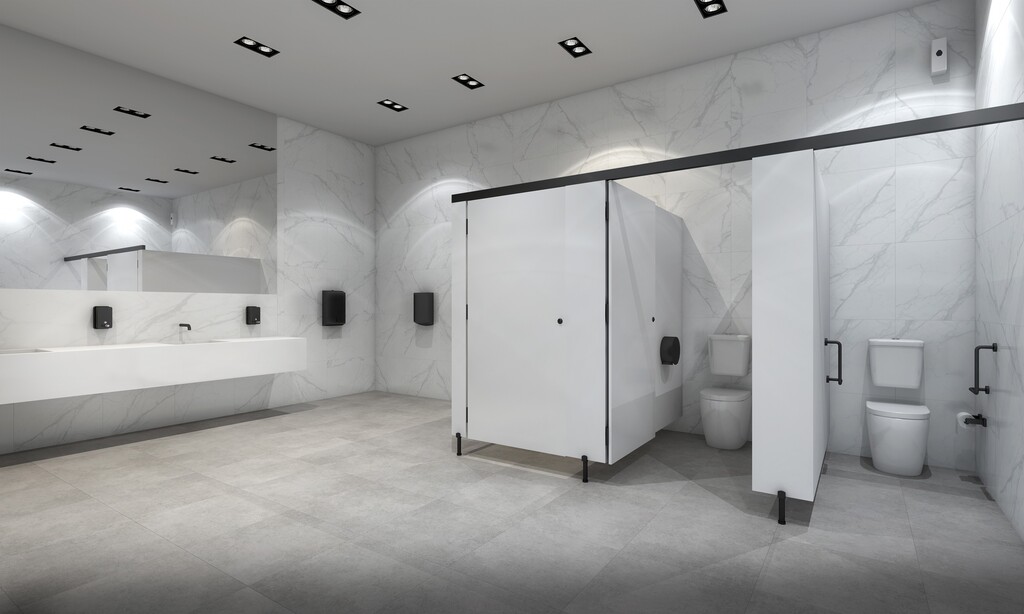The workload of such commercial washrooms and their intense utilization require smart solutions with regard to the optimum design and quality of equipment to increase functionality and durability. There is a need to plan well to provide amenities that will lead to proper sanitation, accessibility, efficiency, and customer satisfaction. This paper looks at critical factors that need to be considered when equipping public washrooms. The main points tackled include compliance with ADA accessibility standards and the combination of sensor countermeasures to the most optimal position of dispensers, waste containers, and baby changing stations.
By starting with understanding the basics of the engineering of an optimal commercial washroom design, business owners are able to make informed equipment selections and design choices, promoting the best interests of their client.
1. Compliance with ADA Accessibility Guidelines
The ADA (Americans with Disabilities Act) provides legally binding accessibility standards that commercial washroom design must comply with. This covers detailed requirements related to room clearances, grab bars, turning radius for mobility devices, toilet and sink heights/positioning, mirror mounting, dispenser placement, floor space, accessible routes, and much more. Maximize accessibility and legal compliance by choosing ADA-compliant fixtures and thoughtfully designing the layout based on current ADA requirements.
2. Durable, Easy-to-Clean Materials

Heavy usage and mess are the ongoing future of public concession rooms. Foil durability and cleaning by choosing solid, non-porous building materials, especially solid polymer partitions, and countertops, will neither chip, degrade, nor absorb the stains over time. Apply heavy-duty industrial coatings and paints, including those formulated to be cleaned with repetitive heavy scrubbing.
3. Sensor-Operated Fixtures
For hands-free operation and enhanced hygiene, specify sensor-activated faucets, soap dispensers, hand dryers, and flushing toilets/urinals throughout the space. This prevents waste and messes compared to manual operation. Select durable, commercial-grade models designed for reliability with high traffic volumes. Ensure sensors can be adjusted in order to avoid malfunction.
4. Water-Efficient Plumbing

Conserve water and lower utility bills by installing low-flow toilets, urinals, and faucets purpose-built for commercial applications. Look for Water Sense-labeled models that provide high-efficiency water usage without sacrificing performance. Choose commercial-grade fixtures made to withstand constant heavy use.
5. Adequate, Well-Placed Lighting
Proper lighting prevents dark, gloomy spaces. Specify LED fixtures with color temperatures ideal for bathrooms—position lighting to provide uniform illumination throughout the space, avoiding shadows or dark corners. Use tamper-resistant covers and place them out of reach to prevent vandalism. Replace harsh overhead lighting with softer wall-mounted sconces. Provide task lighting at mirrors.
6. Odor-Controlling Ventilation Systems

Proper ventilation is critical for odor control. Strategically install high-powered exhaust fans and HVAC systems to forcefully cycle air and keep restrooms smelling fresh—place exhaust vents near toilet areas where odors originate. Make systems demand-controlled to only run when needed. Treat ductwork and vents with antimicrobial coatings that prevent odor-causing bacteria growth.
7.Thoughtful Dispenser Placement
Locate paper towel dispensers, soap dispensers, seat cover dispensers, and hand dryers conveniently within accessible reach of sinks according to ADA guidelines—position so users don’t have to walk far or maneuver awkwardly to use them. Install easy-to-change waste bins nearby to catch used paper towels.
8. Creative Yet Functional Design Choices

Although equipment has to be strong enough, try to find ways of creating a nice atmosphere through decoration where every choice has to be consistent with your brand. For instance, add accent tile, framed artwork, artistic lighting fixtures or sconces, and custom accessories. Just make sure all embellishments satisfy commercial facility durability and ADA compliance requirements.
Bottom Line
In summary, as compared to an average residential bathroom, the commercial washroom design is more complicated, and a more rigorous use of simplicity needs to be considered. All of these considerations impact the laying out of accessible, hygienic, and need-minimal facilities. The vested owners of washrooms for both patrons and staff are able to strategically outfit their washrooms towards the needs that can ensure the welfare of all. A well-designed washroom is a more front-loaded investment. Still, it will pay for itself in spades over time by way of enhancing the client experience, decreasing the fuss, and installing your particular brand image in the customer’s mind.
Explore Further:

